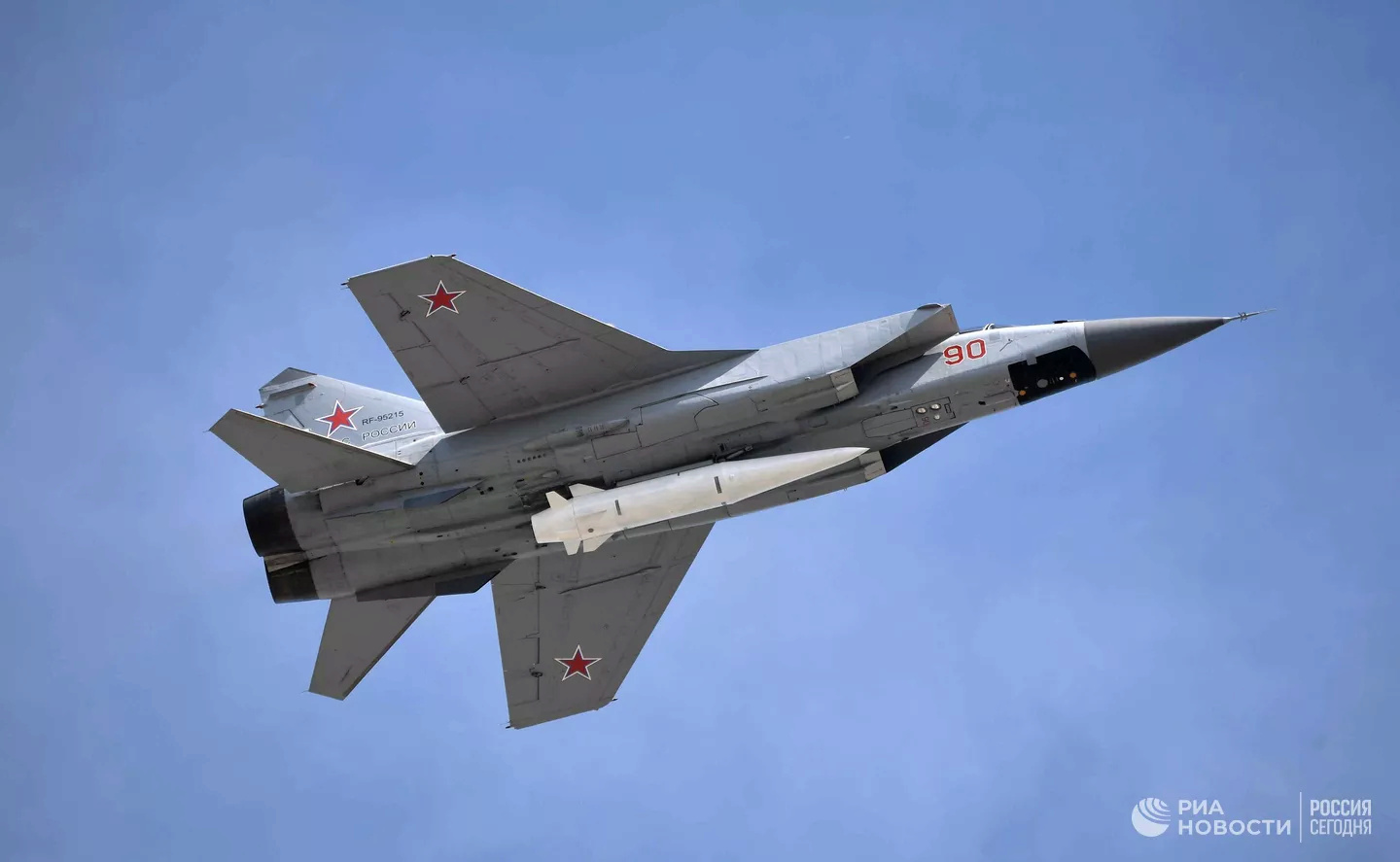Very surprised to know that the Dagger
1.has the speed over M10;
2.can maneuver along the entire trajectory of its flight;
3.can hit moving sea targets.
thought it is a some stop-gap or experimental weapon...
Want a real shock... the ground launched version has been in service for almost two decades and is called Iskander... a single stage solid rocket missile that flies at about mach 7 and can manouver along its entire trajectory and can release decoys and can detect enemy radar emissions to modify its flightpath to make it more difficult to intercept... the Kinzhal is an airlaunched Iskander.
With all the manouvering and the fact that it starts pointing upwards and has to use much of the energy of its rocket motor to get into the air and moving as well as flight manouvers on the way to the target its range is only about 500km as per the INF treaty.
Being airlaunched by a MiG-31K, so released at 18km altitude... above the thickest air in the atmosphere and moving at mach 2.5 already... all that rocket energy that was used to overcome inertia and the weight of the stationary rocket as well as the thickest parts of the atmosphere can be used instead to climb to higher altitude and achieve much higher flight speeds so its range is extended to 2000km.
The original Iskander had three different guidance systems... one was all weather active radar, one was GLONASS and inertial only for fixed targets, and there was also an optical seeker... in all cases they all have GLONASS and inertial navigation to get them to close proximity of the target, where the radar (for ships and buildings and bridges and bunkers and the like) or optical for anything else can be used to get the warhead very close to where you want it.
Note the optical system uses a pattern correlation system so you don't have to be able to discern the actual target but if you can locate a very well camouflaged object in relation to objects nearby you can use that to get an aimpoint to hit the target... ie a drone detects an enemy vehicle camouflaged up to look like a huge bush amongst other bushes that all look very similar... fly the drone over the target and take an image from directly above it... or use a satellite image from above and determine which bush is the target... mark that target as the target in the image and scan the final image to the missiles guidance computer... as it comes in to hit the target it will compare its image with the view it has and hit the target.
Add to that the Cirkon missile, which maneuverability is even greater than that of the Dagger thanks to the scramjet engine that works for a significant part of the flight. Range over 1000 km, for land purposes about 1500 km. The missile is now produced.More hypersonic missiles for strategic aviation are under development. However, for nuclear missile forces, new versions of the HGV. Amazing progress.
The Iskander and Kinzhal both have rocket motors that burn all the way to the target... they have thrust vector controls in their rocket exhaust to steer them, which of course only works when the engine is running.
The advantage of the Zircon is that being an air breather it only carries its fuel, it does not need any oxidiser so instead of weighing almost 4 tons it weighs probably two to two and a half tons and can be launched from a ship at ground level and a stationary start and still fly faster than Kinzhal and also rather further than Iskander which is also surface launched.
Quite an achievement and this is just the begining.
Adding a cassette type (sub-munition dispenser) warhead to Kaliber would be great, against airfields, bridges...
Pretty sure that would already be an option... it was an option for the Kh-59M Kazoo (AS-18) which could use its optical guidance and jet engine to find and then fly the full length of a runway at very low altitude and high speed launching anti runway submunitions as it goes along.
It would also be a valuable warhead for open aircraft shelters separated by berms or even hardened aircraft shelters... the missile could fly down a line of those releasing anti runway submunitions which are designed to punch a few metres through concrete and then explode to undermine the foundations of the runways... penetrating aircraft shelters and exploding inside would be very useful too.
Soon Russia will have Kalibr-M with a greater range of 4500 km and a warhead 1000 kg!
They are also going the other way with mini cruise missiles with high precision and moderate range and a warhead much smaller than currently used.
These new missiles will be much lighter and much cheaper and be able to be carried in large numbers to hit a wide variety of targets like radars and air defence vehicles and HQs and positions that need precisely delivered explosives but not a lot of explosives.... of course as Mindstorm once pointed out they are going the other way with missiles like GROM and GROM 2 with the former being a rocket assisted glide bomb and the latter being the same glide bomb with the rocket propellent replaced with more HE for heavy targets.





 Hole
Hole



